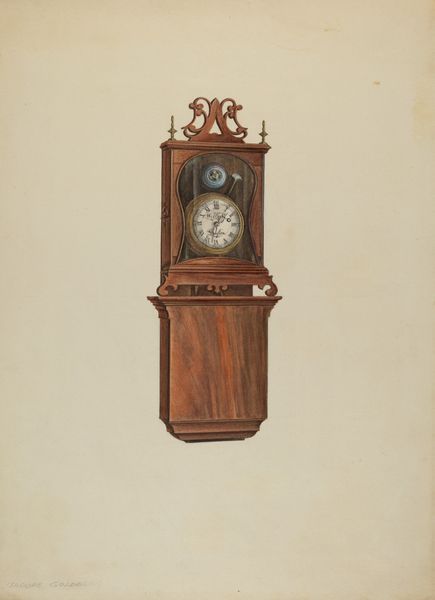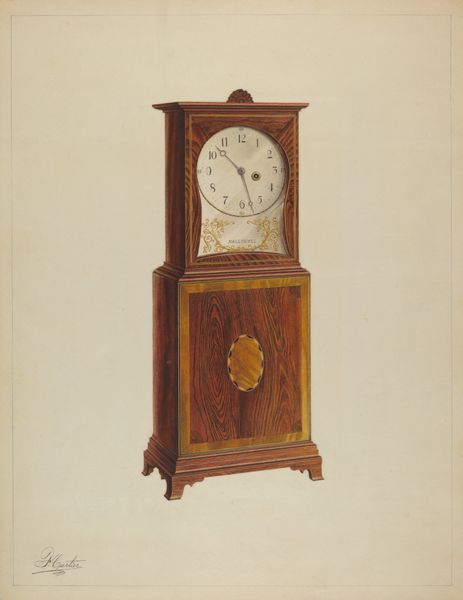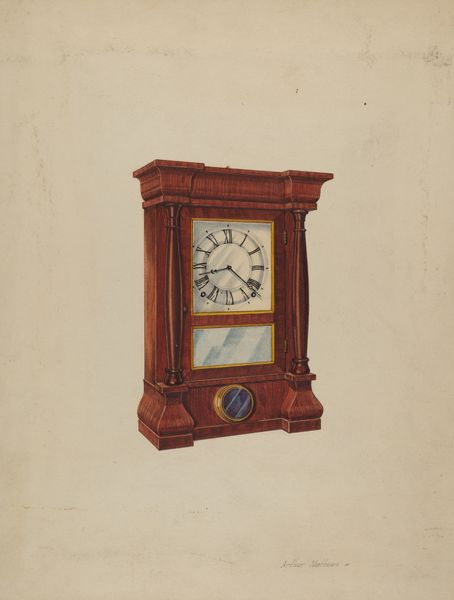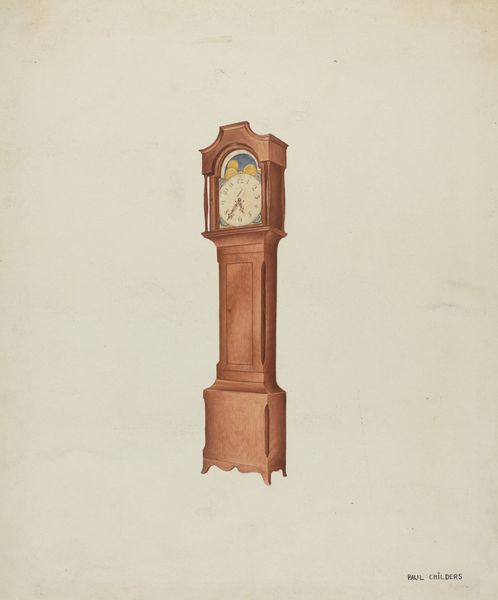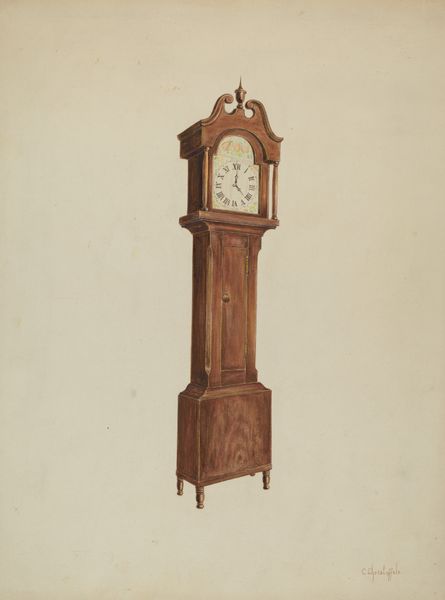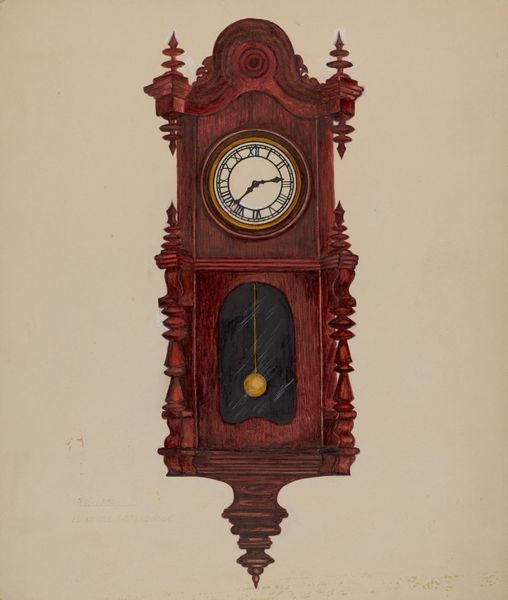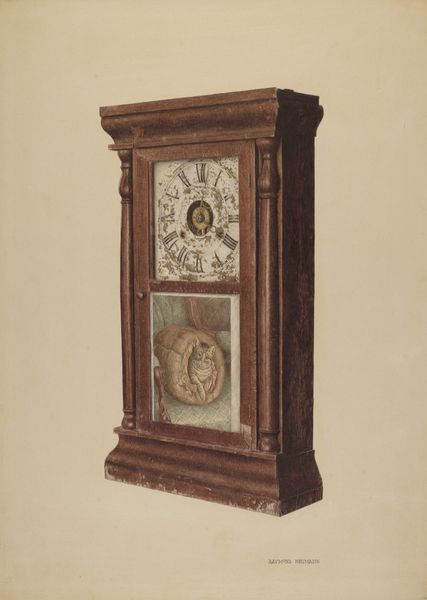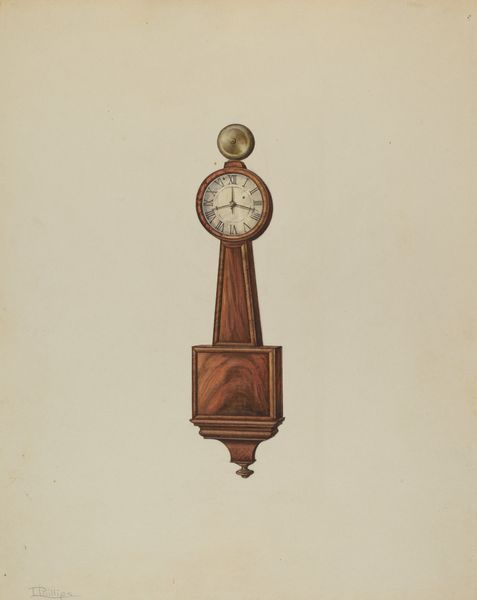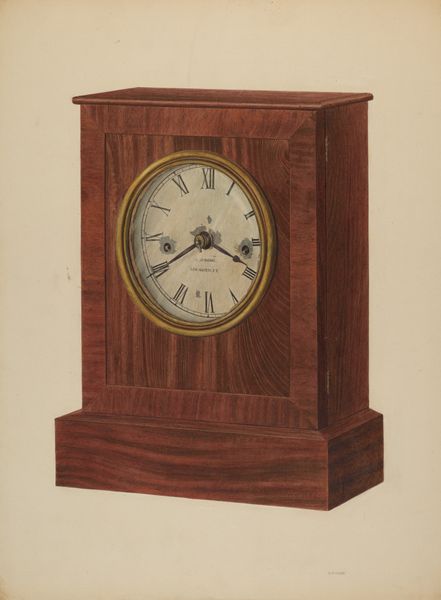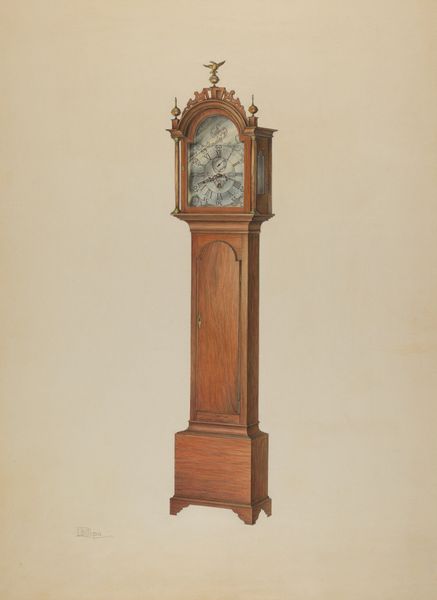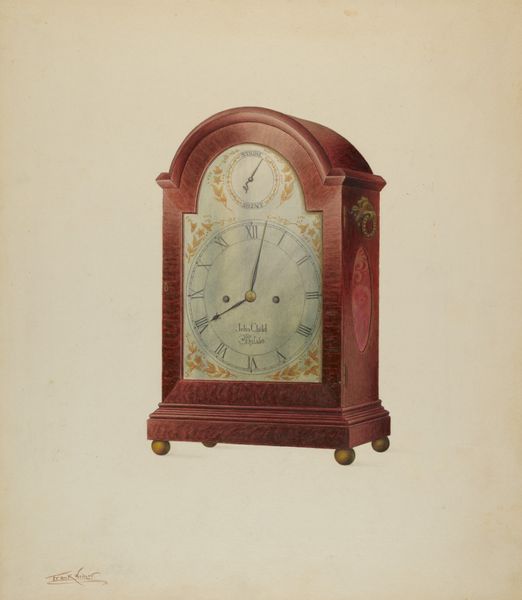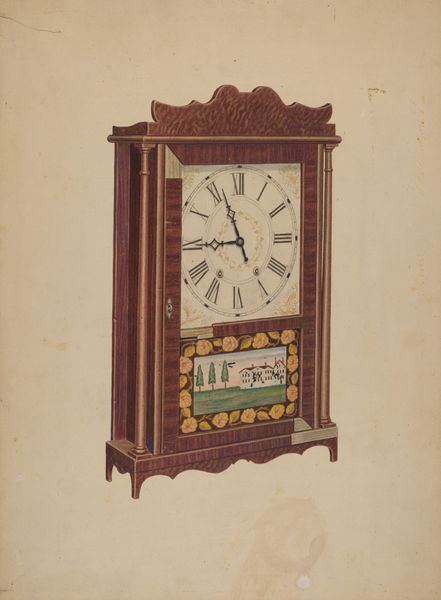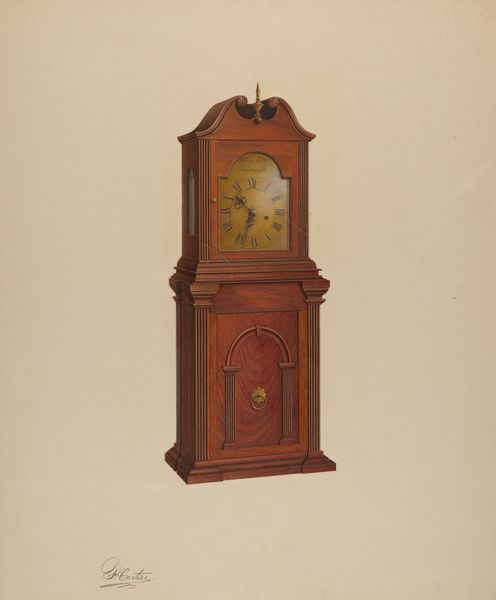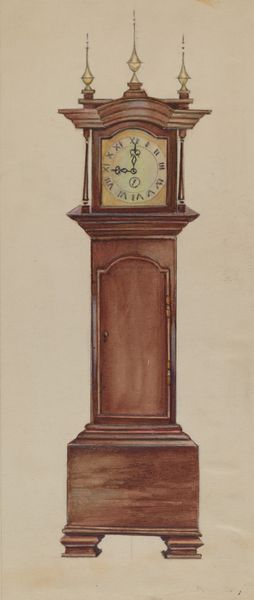
drawing, painting, watercolor
#
drawing
#
painting
#
watercolor
#
watercolor
#
realism
Dimensions: overall: 30.2 x 22.9 cm (11 7/8 x 9 in.) Original IAD Object: 23"high; 9"wide; 3"deep
Copyright: National Gallery of Art: CC0 1.0
Curator: Here we have Ulrich Fischer's "Wall Clock," dating circa 1937, a study rendered in watercolor and drawing. Editor: The color saturation in this rendering feels so precise, so controlled. The polished wood texture is palpable. Curator: Fischer was deeply involved with craft guilds of the era and, though not definitively proven, might be a study piece or a conceptual proposal intended for larger workshops specializing in clocks. These pieces had incredible civic value at the time. Editor: Interesting—so this clock, seemingly about domestic life, could be a symbolic object within a much broader social and political landscape, right? I’m especially curious about his chosen medium, though. Watercolor rendering, usually used for softer subjects like botanical studies or landscape painting… seems at odds with the solid clock. Why watercolor? Curator: Exactly. Using watercolor challenges those boundaries between the "high arts" and functional design, prompting us to question who dictates taste, and what constitutes art worthy of institutional study. Fischer might have intended a limited circulation in technical studies. Editor: Ah, a subtle form of subversion, embedded in process and materials. Each painted stroke meticulously conveys the clock’s wood grain. The metal's coolness is achieved with clever washes. It's almost obsessive in its commitment to reflecting the physical object through the physical means of making. Curator: A commentary on time, domesticity, and perhaps the silent authority a clock possesses within a household—themes rendered ironically ephemeral. This study opens interesting threads about our conceptions of usefulness, especially in contrast to established definitions of art, and in whose interests it serves. Editor: It transforms a quotidian object into something thought-provoking, highlighting the artistry inherent in craft, even domestic craft. Curator: And subtly questioning which visual cues shape what objects or media end up here in museum collections versus private homes. Editor: Agreed. Fischer elevates this everyday clock into something that invites careful consideration, which means our time analyzing this piece has been well spent.
Comments
No comments
Be the first to comment and join the conversation on the ultimate creative platform.
